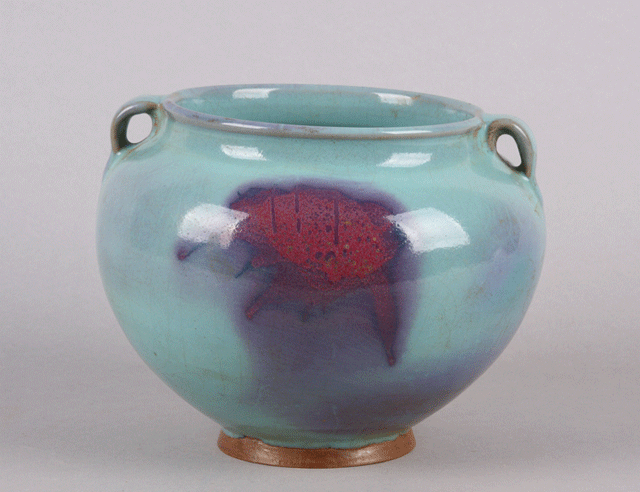
2012.91.80, Jun ware jar, Song through Yuan Dynasties (960–1368)
Eason Eige Collection; photo by B. Bernard
Jun wares (鈞窯) vessels unusually thick glazes that reflect light in unexpected ways. The glaze is often a sky blue but can range widely. The addition of copper-rich pigments leads to splashes of red, as seen in the image below. Because of the red splashes, Jun ware is sometimes called flame or flambé ware in the West.

2012.91.80, Jun ware jar,
Song through Yuan Dynasties (960–1368)
Eason Eige Collection; photo by B. Bernard
Jun Ware's striking optical qualities have to do with the physics of its glaze. Firing turns much of the glaze into tiny spheres of glass. Nigel Wood writes,
At high magnification (x 20000) ... Jun glazes look rather like caviar or frogspawn, with the light-scattering droplets of glass being plainly visible in the glaze. ... The glass droplets in Jun glazes ... are ... considerably finer than the wavelength of blue light ... but through an interference effect known as Rayleigh Scattering they apply a strong bluish cast to the Jun ware glazes.
In other words, Jun ware vessels are blue for the same reason the sky is blue.
The red in Jun ware became so popular that sometimes it was used over most
of the vessel and the blue became a secondary color. To see an example of
a mostly red Jun ware vessel, click on the photo shown below.
To see additional examples of Jun ware, click on the photos below.
To learn more:
Chinese Glazes by Nigel Wood.
See source code for copyright information. Page last revised on January 14, 2016. Please report problems to toh@unm.edu